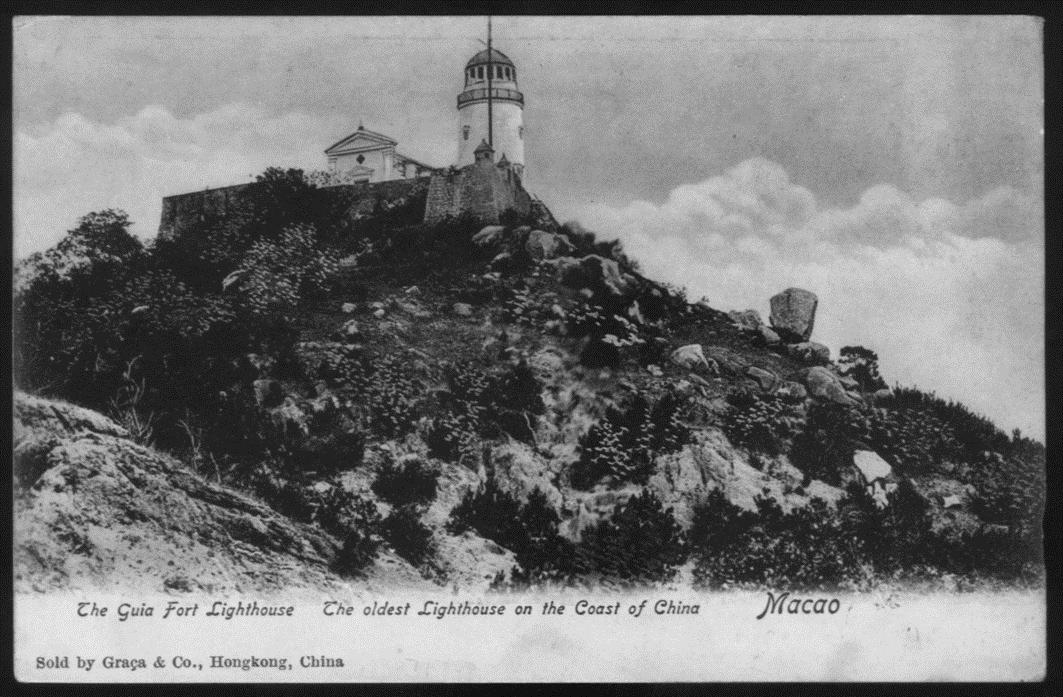Guia Hill The Guia Hill, commonly known as Pine Hill in Chinese, has an elevation of 94 metres above sea level. It is the highest hill on the Macao Peninsula, facing the Penha Hill (Bishop’s Hill in Chinese) in the far distance. Atop the hill stand a chapel, the oldest lighthouse of the Far East and the Guia Fortress that was built in 1622 for military defense. The ridge of the Guia Hill is connected to that of the S. Januário Hill, which is of less altitude and does not have any conspicuous peak. Topographically, Guia Hill encompasses the S. Januário Hill in the eyes of the public. Back in the old days, Guia Hill was known as Qin Hill for its shape resembles that of a Chinese musical instrument) and was surrounded by the sea on its east.
The Guia Hill remained barren until the 19th century when the Portuguese administration of Macao afforested it with pine trees. Henceforth, it was known as “Hill of Ten Thousand Pine Trees”. The northern side of the Hill, which is of higher elevation, houses a chapel, fortress, lighthouse and a pathway encircling the hillside. The Conde de S. Januário Hospital is seated on its southern side, with the winding Rua Nova à Guia and S. Francisco Garden occupying its foot.
The Guia Hill remained barren until the 19th century when the Portuguese administration of Macao afforested it with pine trees. Henceforth, it was known as “Hill of Ten Thousand Pine Trees”. The northern side of the Hill, which is of higher elevation, houses a chapel, fortress, lighthouse and a pathway encircling the hillside. The Conde de S. Januário Hospital is seated on its southern side, with the winding Rua Nova à Guia and S. Francisco Garden occupying its foot.











